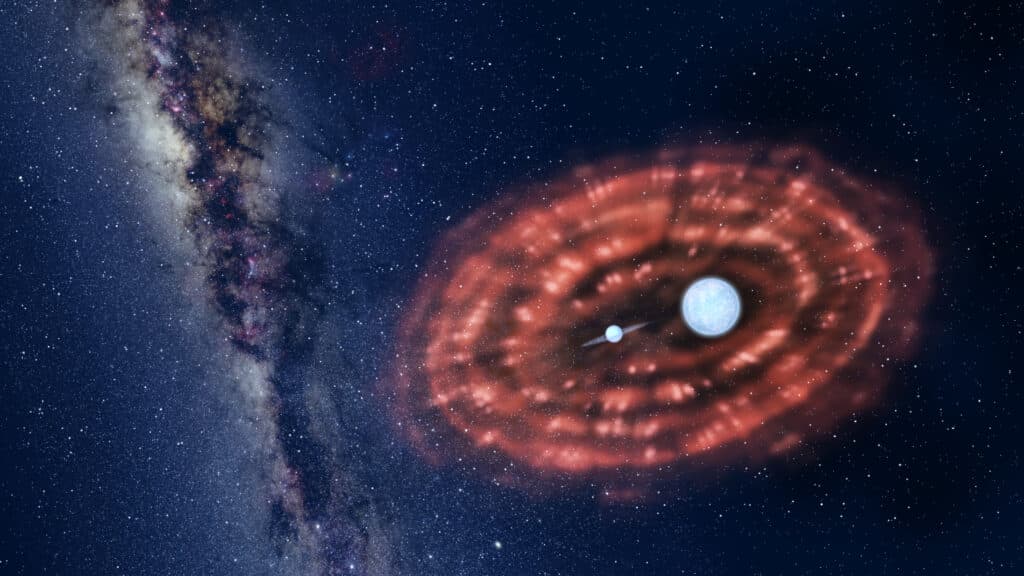An international team of astronomers have made a first-of-its-kind discovery. Researchers from the Chinese Academy of Sciences and Australian National University located a binary system ejecting a common envelope at a speed of about 200 kilometers per second.
It’s the very first time astronomers observed direct evidence of common envelope evolution, which is a key process of binary star evolution. “This important discovery provides a way to accurately characterize the common envelope evolution of binary stars through observation,” the researchers explain in a media release.

Using the Australian National University’s 2.3-meter wide-field telescope and the Kepler telescope, international astronomers found a binary system consisting of a hot subdwarf and a white dwarf, dubbed J 1920. The two stars orbit around each other with an orbital period of about 3.5 hours in this binary system, and are getting closer and closer.
International astronomers say the expanding shell is moving at a speed of nearly 200 kilometers per second. Astronomers add this expanding shell is a common envelope that was ejected from the binary system about 10,000 years ago.
Since the J 1920 binary system is continually contracting, the orbital angular momentum is severely dissipating due to the friction caused by the orbital motion of the two stars in the envelope. “This is a new mechanism for angular momentum loss in addition to the mechanisms of magnetic breaking and gravitational radiation,” astronomers say.

Common envelope evolution plays an important process in binary evolution. The binary system’s donor star expands dramatically due to the mass loss, which leads to the two stars spiraling towards each other and forming a common envelope. This determines the evolution of the binary system. Astronomers say “a binary system with a shorter orbital period would be expected to form if the common envelope is ejected successfully. Otherwise, the two stars within the common envelope would merge into a single object.”
Binary evolution determines the fate of stellar objects. It has been used to explain most mysteries in astronomy and astrophysics such as the formation of exotic stellar objects including Type Ia supernovae, double black holes and double neutron stars.
Astronomers say their discovery has turned a theoretical idea into reality. “Scientists have not only seen the first evidence of common envelope evolution, but have also been able to accurately characterize the common envelope evolution of binary stars through observation,” the media release notes.
The study if published in the journal Monthly Notices of the Royal Astronomical Society.








-392x250.png)



